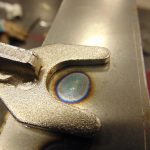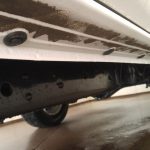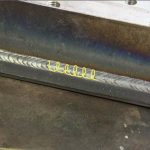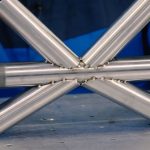Do you weld? If so, you know how important your welding transformer is.
But what are taps on a welding transformer and how can they help? In this blog post, we’ll explore the function of taps on a welding transformer.
We’ll also discuss why choosing the right tap for your project is essential and provide safety tips.
So, let’s get to the bottom of it.
Types of Taps on a Welding Transformer
Contents
- 1 Types of Taps on a Welding Transformer
- 2 Benefits of Taps on a Welding Transformer
- 3 How to Connect Taps on a Welding Transformer
- 4 Safety Precautions When Working with Taps on a Welding Transformer
- 5 Troubleshooting Common Issues with Taps on a Welding Transformer
- 6 Different Uses for Taps on a Welding Transformer
- 7 How to Select the Right Tap for Your Project
- 8 Conclusion
Welding transformers are an essential part of the welding process, allowing you to control the voltage, current, and frequency of the welding arc.
To ensure your welding job is successful and up-to-date, there are three types of taps on a welding transformer: primary, secondary, and tertiary.
The primary tap is used to adjust the transformer’s voltage output. Different jobs require different voltages to be competitive, so this tap is critical for achieving optimal results.
The secondary tap adjusts the current output of the transformer. This ensures that your welding job has the right amount of current for optimum performance.
Finally, the tertiary tap adjusts the frequency output of the transformer. This allows you to get exactly the right frequency for your specific welding job.
Benefits of Taps on a Welding Transformer
Welding transformers are an essential part of any welding project, but did you know that taps on a welding transformer can make your jobs easier and more cost-effective?
Taps allow you to adjust the voltage output to match your needs, so you can be sure that you’re using the right amount of electricity for the job.
This not only helps to ensure accuracy, but it also helps to reduce power consumption and save money on electricity bills.
Furthermore, taps give welders more control over their output, making it possible to make precise adjustments as needed.
How to Connect Taps on a Welding Transformer
Identifying the Taps
The taps on a welding transformer are the connections that allow you to adjust the voltage output.
They are usually labeled with numbers or letters, and it is important to identify them correctly before attempting to connect them.
Depending on the type of transformer, there may be two or three taps available.
Connecting the Taps
Once the taps have been identified, the next step is to make the connections.
Depending on the type of transformer, this may involve using a screwdriver or a wrench to loosen and tighten the terminals.
It is important to ensure that the wires are securely connected, as any loose connections can cause arcing and damage to the transformer.
Testing the Connections
Once all of the taps have been connected, it is important to test them to ensure that they are working properly.
This can be done by using a multimeter to measure the voltage output at each tap. If all of the readings are within the expected range, then the connections are good and ready for use.
Troubleshooting
If any of the readings are not within the expected range, then it is necessary to troubleshoot the problem.
This may involve checking for loose connections or faulty wiring. It is also important to check for any signs of arcing or overheating, which can indicate a problem with the transformer itself.
Once any issues have been identified and corrected, then it should be safe to use the transformer.
Safety Precautions When Working with Taps on a Welding Transformer
When working with taps on a welding transformer, safety should always be the top priority.
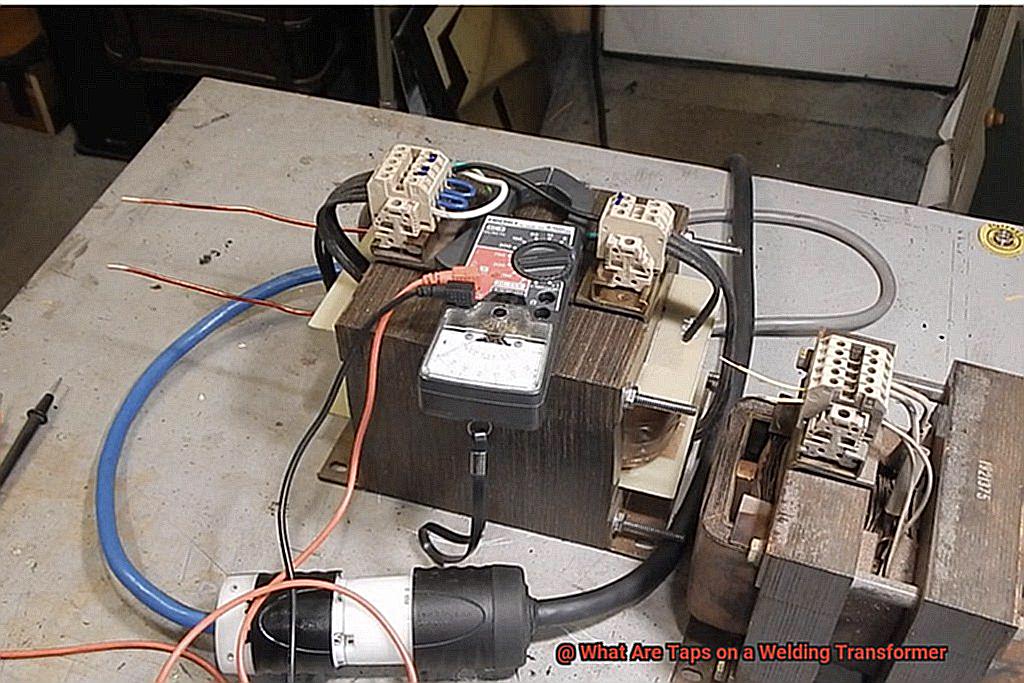
To make sure you’re protected, it’s essential to wear the appropriate safety gear, including safety glasses, protective gloves, and a welding helmet.
Additionally, be sure to read the user manual before beginning any work on the transformer.
This will ensure you know how to use it properly. Furthermore, check that all electrical connections are securely fastened and insulated before touching the transformer.
Be aware of potential electric shocks that can occur when working with welding transformers, and keep any combustible materials away from the transformer while it is in use.
Troubleshooting Common Issues with Taps on a Welding Transformer
Taps on welding transformers can sometimes become faulty, leading to decreased performance or even complete failure.
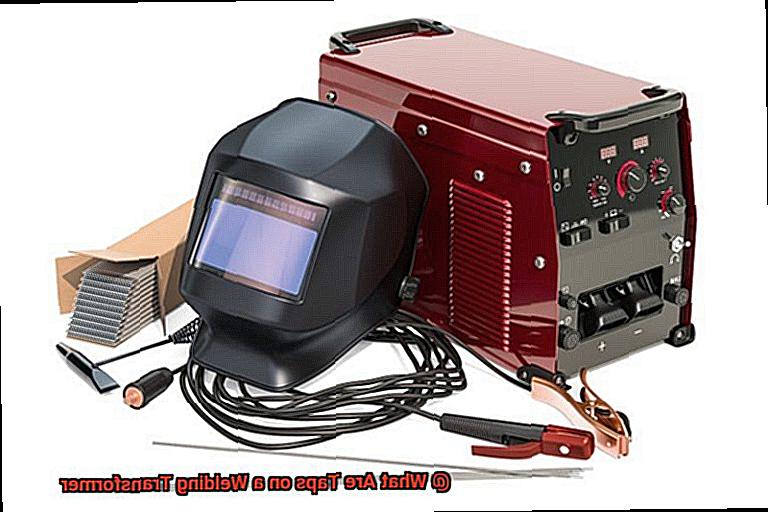
But don’t worry, some common issues can be troubleshot and rectified with a bit of effort.
To begin, check for loose connections.
If this is the case, simply tighten the connection and check for continuity. Next, if there’s a short circuit present, trace the circuit and test its components for proper operation.
Finally, make sure to check the wiring against the manufacturer’s instructions to ensure it is correct—incorrect wiring can cause a lot of headaches down the line!
Troubleshooting these common issues doesn’t have to be difficult. Just take your time and follow the steps outlined above.
Different Uses for Taps on a Welding Transformer
Taps on a welding transformer are an essential tool for any welder. They allow for precise control over voltage, frequency, amperage, and duty cycle, ensuring that welds are of the highest quality and that the welding process is safe and efficient.
Adjusting the voltage output of the transformer is important for delivering the correct amount of voltage to the weld.
This helps create a strong connection between two pieces of metal. Taps can also be used to adjust the frequency of the welding current, which helps reduce spatter and improve arc stability.
Amperage output can also be adjusted with taps on a welding transformer.
This allows for more precise control of the welding process and helps ensure it runs efficiently.
Additionally, taps can be used to control the duty cycle of a welding transformer, helping to prevent overheating and prolong its life.
In conclusion, taps on a welding transformer are invaluable tools for any welder.
They provide precise control over various aspects of their work and help ensure that welds are strong and efficient while also protecting their machinery from damage due to overheating or other problems.
How to Select the Right Tap for Your Project
Consider the Project’s Material
When selecting a tap for your project, it is important to consider the material of the project. Different materials may require different types of taps.
For instance, if you are working with steel, you may need to use a high-speed steel tap. If you are working with aluminum or other softer metals, you may need to use a carbide-tipped tap.
It is also important to consider the hardness of the material; harder materials may require more specialized taps.
Select the Correct Thread Pitch
The thread pitch of a tap is another important factor to consider when selecting a tap for your project.
The thread pitch refers to the number of threads per inch (TPI) on the tap. Different thread pitches are designed for different materials and applications.
For instance, if you are working with fine threads, you may need to use a tap with a finer thread pitch than if you were working with coarse threads.
Consider the Tap’s Size and Length
The size and length of the tap are also important factors to consider when selecting a tap for your project.
The size of the tap will determine the size of the hole that can be tapped, while the length of the tap will determine how deep into the material it can reach.
If you are working with a thicker material, you may need to use a long tap to reach through it.
Consider the Type and Number of Flute
The type and number of flutes on a tap are also important factors to consider when selecting a tap for your project.
Different flute types are designed for different materials and applications. For instance, if you are working with harder materials, you may need to use a spiral flute tap, while softer materials may require an axial flute tap.
The number of flutes on a tap can also affect its performance; more flutes can help increase cutting speed and reduce vibration.
Conclusion
In conclusion, taps on a welding transformer are an essential tool for any welder.
They provide precise control over the welding process and can help protect equipment from damage caused by overheating or other issues.
Choosing the right tap is key to successful welding, so it’s important to consult with a licensed professional if you have any questions or concerns.
Remember to always take safety precautions when working with welding transformers.
